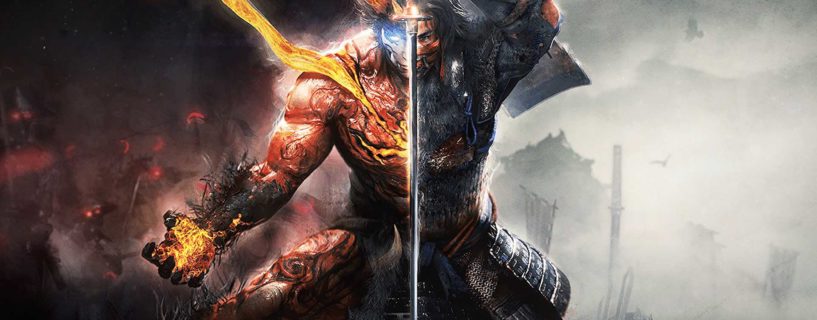Nioh 2, the sequel to Team Ninja’s 2017 Nioh, originally launched on the PlayStation 4 last year in March as a PlayStation exclusive. Now, nearly one year later, this “Dark Souls meets Diablo” samurai tale is being released for PC on Steam in Nioh 2 – The Complete Edition (Nioh 2 CE). This version includes all three DLC expansions and all free post-launch updates from the PS4 version to truly make this the complete Nioh 2 experience. But does Nioh 2 slay the competition, or is this PC port poorly planned? Here’s our review of Nioh 2 – The Complete Edition on PC.
Nioh 2 is set in the late-1500s Sengoku-era Japan, before the events of the first Nioh. Each subsequent DLC expansion goes even further back in time, as you learn more about the origins of your mystical sword – and of yourself. The silent protagonist, who is just called Hide in memory of their mother, is a shiftling – half-man, half-yokai – and fights against other yokai as a mercenary. Because of their prowess, they eventually meet the legendary Oda Nobunaga and are thrust into the forefront of some of the most epic battles in Japanese history.
Of course, these battles all have a heavy dose of fantasy mixed in to incorporate yokai into them. After all, your whole purpose is fighting these mystical demons and, ultimately, defeating the big bad yokai at the end of it all. There are a lot of historical figures that make an appearance, like Akechi Mitsuhide, Honda Tadakatsu, and Hattori Hanzo which is really cool to see Team Ninja’s take on these characters. Most of these characters have small side stories that take you across neat sub missions apart from the campaign. Thankfully, there is a character directory available from the player’s hut that offers succinct summaries in case you lose track of which historical Japanese figure is which.
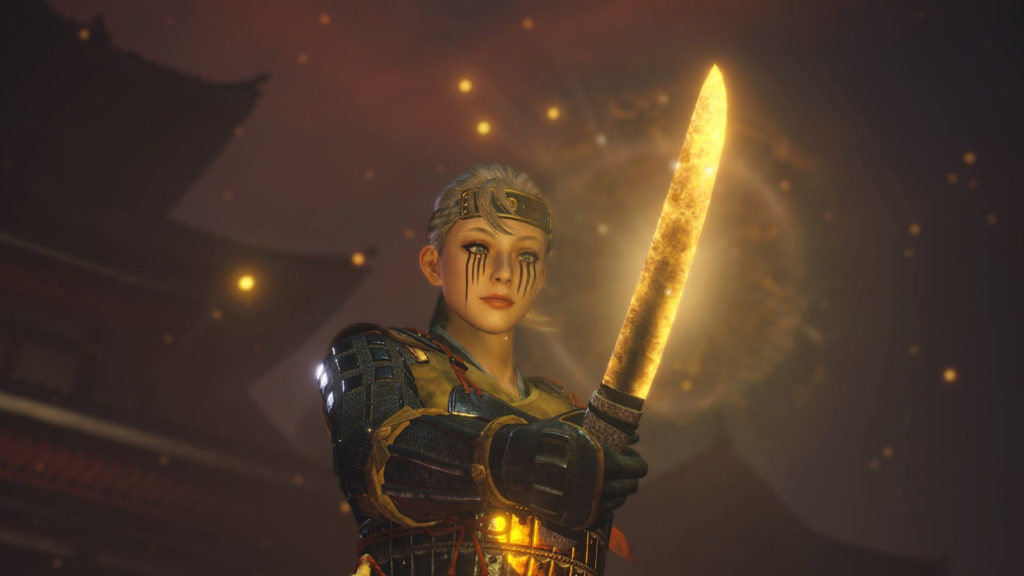
I was a big fan of the original Nioh when it launched in February 2017, not even a year after Dark Souls III came out. What enticed me originally was the RNG loot system, but I was absolutely smitten with the Japanese setting and lore woven throughout. When Nioh 2 launched last year on PlayStation 4, I picked it up on launch day and beat it within a week. I think its launch was overshadowed by DOOM Eternal and Animal Crossing that came out the following week, and by the global pandemic that saw international lockdowns and quarantines put into place around the same time. Since it launched, there have been three DLC expansions added to Nioh 2 that include new story missions, new yokai monsters, new onmyo magic, and ninjutsu skills.
In total, Nioh 2 – The Complete Edition includes over 25 main story missions, 100 sub and twilight missions, and the Underworld – a 108-floor endgame dungeon – which combine to provide over 100 hours of total gameplay. On PC, it took me over 30 hours to beat just the main story again, whereas I remember it taking closer to 60 hours when I first beat it on PS4. That’s not including the three expansions, or the pseudo new game plus mode that unlocks after completing the final mission. The new game plus is essentially a new difficulty mode which lets you play through missions again against higher level enemies, which drop higher level loot.
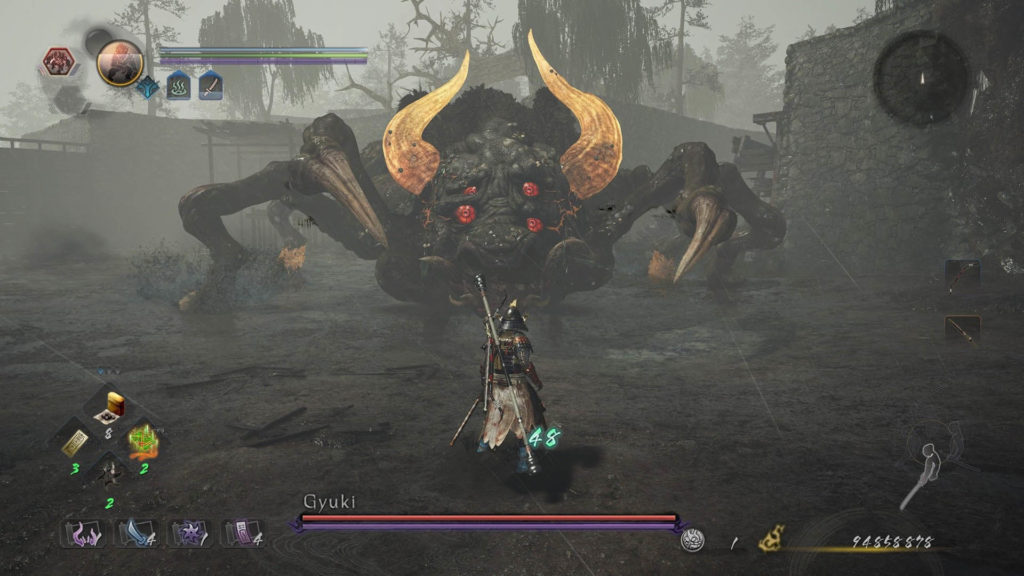
The combat system is heavily influenced by FromSoftware’s iconic Dark Souls series, although at a much faster pace since each weapon can fluidly transition between different stances. The 11 different weapon types, including the new Splitstaff and Fists that were added post-launch, offer vastly different move sets from one another in order to accommodate nearly every playstyle. Learning which weapon jives with you the most is half the fun and mastering it by seamlessly weaving through the three different stances is the other half. I appreciate that each weapon type has a separate, unique skill tree that can unlock new moves and passive bonuses for further customization.
A new element added to Nioh’s combat is the Burst Counter that allows you to counter against yokai’s new Burst attacks. These highly-damaging attacks are indicated by a glowing red aura beforehand, which only gives a small window to pull off this counter. The Burst Counter works just like a parry and can open enemies up for a counterattack. Utilizing these counters is essential to smoothly progressing past bosses as not every attack can simply be blocked or dodged, as I frequently learned the hard way. Be prepared to die again and again as you learn when to dodge, when to block, and when to Burst Counter.
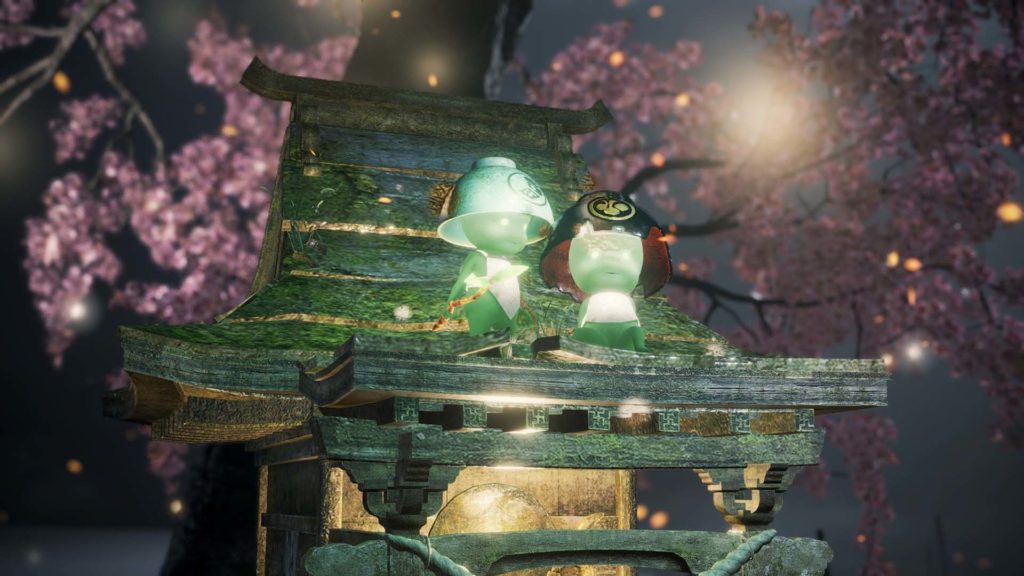
Additionally, slain yokai have a chance to drop soul cores which can be slotted into your guardian spirit to not only boost attack and defense, but also borrow a yokai’s signature move. An Enki’s soul core has you jump up and hurl a giant spear at an enemy, whereas a Dweller’s will summon a pickaxe-wielding Dweller to repeatedly smash its target. These soul cores also have random modifiers, like adding to Life or increasing Item Drop Rates, which can be enhanced and customized further in order to min-max particular stats. The loot game is strong in Nioh 2 and there are multiple facets to increasing your stats.
Honestly, the loot grind in Nioh 2 is probably the most enjoyable I’ve experienced out of any RNG or Diablo-like loot system. You can even increase your gears’ levels by using ‘soul match’ at the Blacksmith, which raises an item’s level so you could, theoretically, keep using the same rare sword you found at level 4 all the way to level 150 and beyond. You can also temper your gear, which replaces unwanted modifiers with new ones, as well as refashion any of your gear to make it look like another piece. You don’t want to look mismatched when you’re playing online with other people, right?
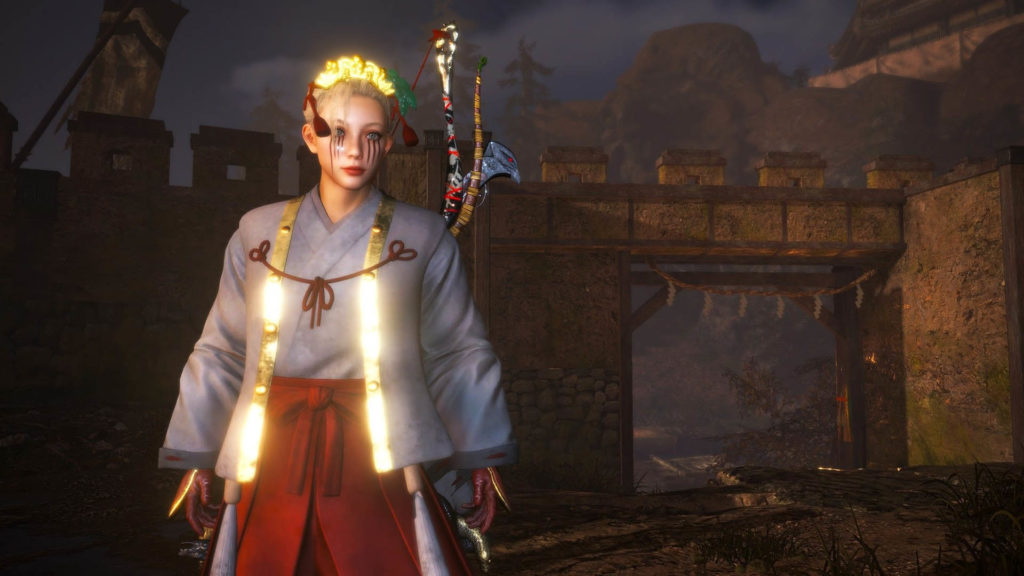
Extra gear can be disassembled for crafting parts or sold outright to the blacksmith for cash money. You can even give items as an offering to the little, green Kodamas at shrines for Amrita (which are like souls from Dark Souls), or donate it at the hidden teahouse to earn glory and help rank up your clan. The gear expands even further after beating the main story when a new fifth tier of rarity – Divine gear – get introduced into the mix. At higher difficulties, there’s also a new +Value that can be found on gear, which honestly reminds me of how Final Fantasy XIV did item Levels.
You can show off all of your fancy gear – and pro-level skills – to others in multiplayer. By using the Torii Gate during mission selection, you can choose to embark on either Expeditions -which start missions with other players in co-op – or join aplayer in Random Encounters. Expeditions work like a matchmaking lobby, where you will join in with up to two other players before a mission starts. The benefit to this is that you aren’t automatically kicked out of a host’s match when you die. Instead, there are a set number of times you can die as a team. On PC, the matchmaking is exclusive to others playing on Steam, but for those on PlayStation there is cross-player between the PS4 and PS5 versions of Nioh 2.
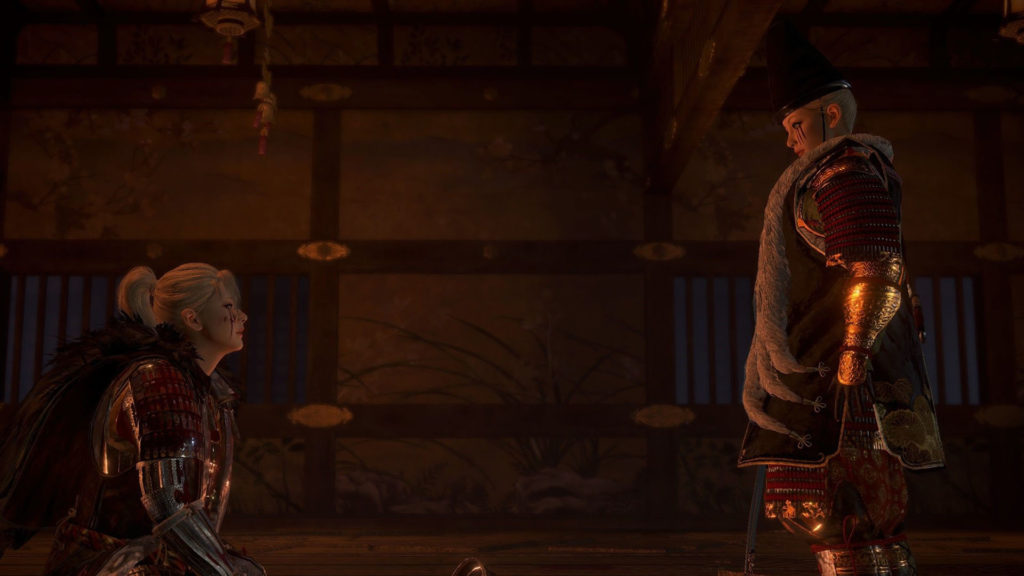
The Random Encounters are what I prefer, however. In these matches, you are joined to another player’s game who is actively searching for a Visitor mid-mission. Usually, these players will need help overcoming the mission’s boss. I prefer these random matches because they are quick, I can get loot from the boss without playing through the whole mission, and I am being helpful to someone else that may have hit a wall. The downside is that if either you or the host dies, then you are de-synchronized and will get kicked back out to the map screen. It’s frustrating to finally join an encounter, load in, and have the host meet their untimely demise before you can even catch up to them.
In general, my performance during online matches was very stable although there were a few times that the effects on-screen caused my frame rate to dip. The Nioh 2 CE offers capped FPS at either 30, 60, or 120 on PC as well as 4K Ultra-HD support, HDR support, and Ultra-Wide support. I mostly played in Ultra-Wide 1440p with all of the graphical options set to the highest, but in multiplayer I had to bump down some settings to Low in order to keep consistent frame rates. I only wish that there were more graphical settings to adjust as the options available seem sorely lacking. For example, there’s not even an option to toggle Vsync. Team Ninja is working to incorporate rendering performance improvement and DLSS support after launch, so maybe they will include some additional settings options like Vsync, foliage density, or anti-aliasing options later on.
Although not an active multiplayer mode like the Torii Gate, the Hidden Teahouse is unlocked in the starting point on the map after the first chapter. The Teahouse allows you to access clan battles, in which two teams compete for glory points in a weekly competition. There are 50 different clans to choose from, each offering different passive bonuses for its members ranging from increasing item drop rates to directly raising damage with a certain weapon type. This gives me a reason to play more every day so that I can earn my clan more glory.
This is about as close as Nioh 2 gets to direct PvP as the only other way is fighting against an AI of players’ avatars. I enjoy summoning other players’ characters from graves during missions because defeating them will earn glory for my clan as well as have a chance to drop that character’s equipped gear from when they died. This can be a good source of equipment at higher levels where other players have already completed sets of gear or have acquired powerful weapons. All the same, I wish there was an actual online PvP arena to test my skills.
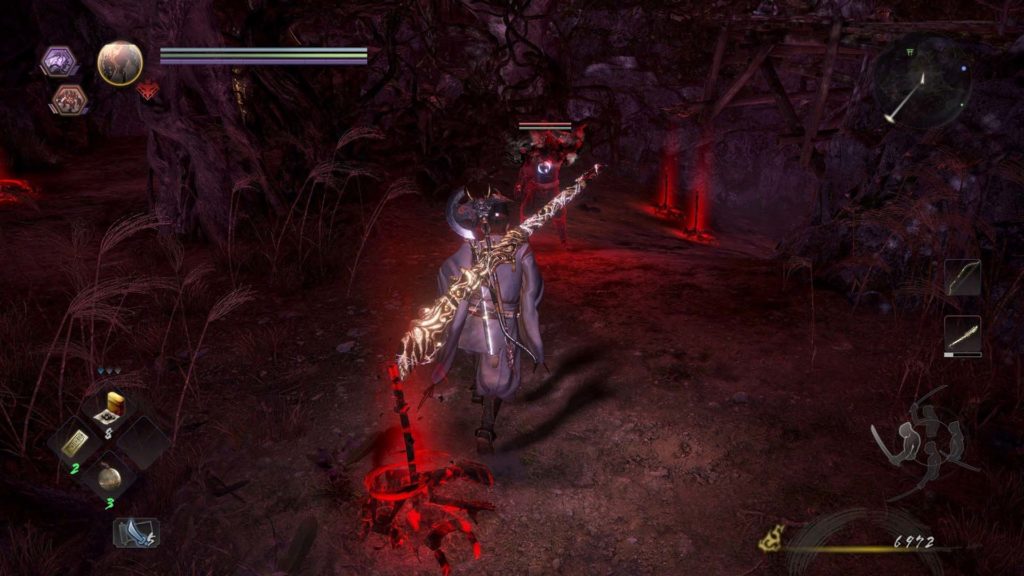
Conversely, you can use an item to drop a benevolent grave for other players to use. This leaves behind a blue-colored grave that other players use mid-mission in order to summon an AI of your character. This benefits you because every time another player summons your avatar, you earn even more glory for having helped them out.
The real fun begins after beating Nioh 2’s main story. Once you’ve finally defeated the big, bad yokai boss you unlock a new difficulty mode called Way of the Strong. This lets you replay all of the missions again, but at a much higher difficulty level. Additionally, you can sacrifice an accessory to unlock a Stone of Penance, which further increases loot drops and your luck rate but at the cost of making enemies even stronger. The end game is where loot grinding becomes more real, but it’s also extremely fun to challenge yourself in these higher difficulty missions.
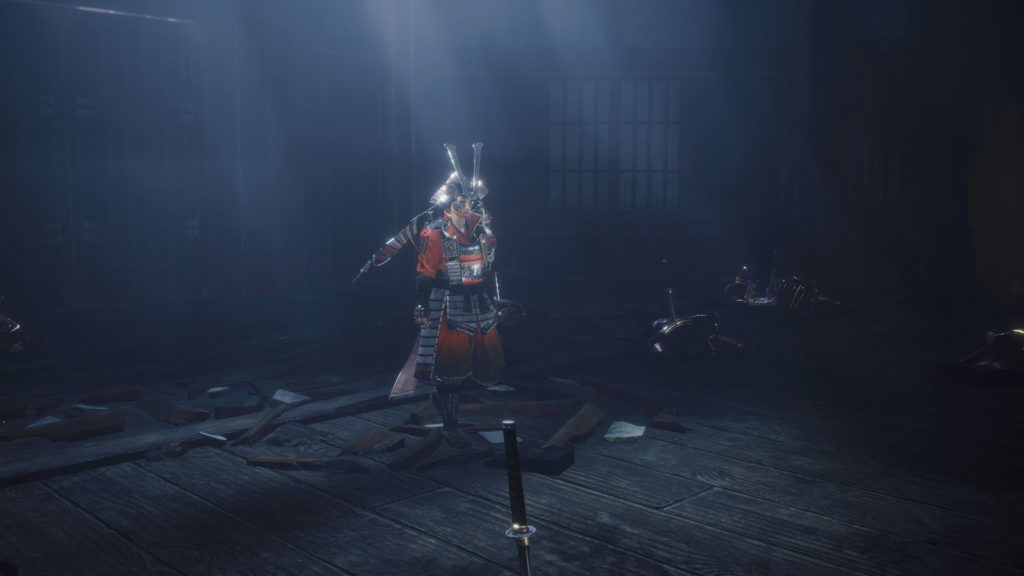
To keep things interesting, these higher difficulty missions also remix enemy placement, and you can find alternate enemies or additional enemies when compared to the vanilla version. This helps to break up a bit of the tedium you may encounter when replaying missions again. In even higher difficulty modes, this goes even further by placing enemies previously only in the DLC expansions into the regular missions as well.
The other major endgame grind is gaining access to the Underworld, which is a 108-floor dungeon unlocked only after beating the final story mission in the hardest difficulty mode, Way of the Nioh. Unfortunately, I wasn’t able to access the Underworld in my time so far in Nioh 2 – The Complete Edition as it takes a while to beat each new difficulty. That said, I’ve been enjoying my time replaying the story and fully intend to reach the Underworld soon.
I think Nioh 2 is one of the most underrated titles of 2020 and launched at a dreadfully inopportune time. Thankfully, The Complete Edition brings all of the new missions, weapons, magic, and ninjutsu skills that were added post-launch and brings it to PC. This is by far my favorite Souls-like or Soulsborne game and I applaud Team Ninja for pushing Nioh to an elevated status in Nioh 2 and introducing new mechanics, like Burst Counter, instead of letting the combat remain static. Despite the lack of graphical options to choose from, Nioh 2 still ran fantastic and much smoother than on my PS4 Pro. If you are at all interested in a new and challenging Souls-like game, or just love grinding for loot, then Nioh 2 – The Complete Edition is a must-buy on PC.

